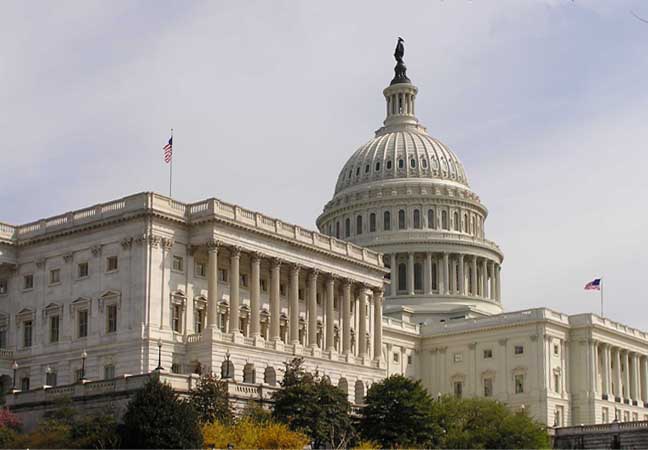The American Institute of Architects today released a letter from more than 350 different associations and companies expressing opposition to efforts by special interests to gut energy conservation requirements for federal buildings.
The letter, which is addressed to Energy and Natural Resources Chairman Ron Wyden, D-Ore., and ranking Republican Lisa Murkowski of Alaska, was released one week ahead of the scheduled mark-up of the Energy Savings and Industrial Competitiveness Act by the Senate Energy and Natural Resources Committee May 8.
You can see this press release online here: http://www.aia.org/press/releases/AIAB098645
That legislation, introduced by Senators Jeanne Shaheen (D-N.H.) and Rob Portman (R-Ohio), would promote greater use of energy efficiency technology in commercial and residential buildings and by manufacturers.
However, efforts by special interests to weaken energy conservation requirements for federal buildings are likely to surface during the mark-up. In particular, an amendment is expected to be offered that may weaken or eliminate Section 433(a) of the Energy Independence and Security Act (EISA). The 2007 law requires federal agencies to phase out the consumption of energy from greenhouse-gas-emitting sources in newly constructed or renovated federal buildings by 2030, unless they can show such reductions are not technically feasible.
“According to the Department of Energy’s Energy Information Administration,’’ the letter states, “the building sector accounts for 39 percent of total U.S. energy consumption, more than both the transportation and industry sectors. The same study found that buildings are responsible for 71 percent of U.S. electricity consumption and that buildings in the United States alone account for 9.8 percent of carbon dioxide emissions worldwide.
“Weakening or repealing federal building energy policies will dramatically harm the federal government’s ability to design and build facilities that use less energy, save taxpayers money, and protect the environment,” the letter concludes. “Therefore, we urge you to oppose efforts to weaken the energy consumption and GHG emission requirements of EISA Sec. 433(a) and other important energy-saving policies.”
A full text of the letter can be found here. A “Myth vs. Fact” document about Section 433 of EISA can be found here.
About The American Institute of Architects
Founded in 1857, members of the American Institute of Architects consistently work to create more valuable, healthy, secure, and sustainable buildings, neighborhoods, and communities. Through nearly 300 state and local chapters, the AIA advocates for public policies that promote economic vitality and public well being. Members adhere to a code of ethics and conduct to ensure the highest professional standards. The AIA provides members with tools and resources to assist them in their careers and business as well as engaging civic and government leaders, and the public to find solutions to pressing issues facing our communities, institutions, nation and world. Visit www.aia.org.
Related Stories
Office Buildings | Mar 21, 2024
BOMA updates floor measurement standard for office buildings
The Building Owners and Managers Association (BOMA) International has released its latest floor measurement standard for office buildings, BOMA 2024 for Office Buildings – ANSI/BOMA Z65.1-2024.
Healthcare Facilities | Mar 18, 2024
A modular construction solution to the mental healthcare crisis
Maria Ionescu, Senior Medical Planner, Stantec, shares a tested solution for the overburdened emergency department: Modular hub-and-spoke design.
Codes and Standards | Mar 18, 2024
New urban stormwater policies treat rainwater as a resource
U.S. cities are revamping how they handle stormwater to reduce flooding and capture rainfall and recharge aquifers. New policies reflect a change in mindset from treating stormwater as a nuisance to be quickly diverted away to capturing it as a resource.
Plumbing | Mar 18, 2024
EPA to revise criteria for WaterSense faucets and faucet accessories
The U.S. Environmental Protection Agency (EPA) plans to revise its criteria for faucets and faucet accessories to earn the WaterSense label. The specification launched in 2007; since then, most faucets now sold in the U.S. meet or exceed the current WaterSense maximum flow rate of 1.5 gallons per minute (gpm).
MFPRO+ New Projects | Mar 18, 2024
Luxury apartments in New York restore and renovate a century-old residential building
COOKFOX Architects has completed a luxury apartment building at 378 West End Avenue in New York City. The project restored and renovated the original residence built in 1915, while extending a new structure east on West 78th Street.
Multifamily Housing | Mar 18, 2024
YWCA building in Boston’s Back Bay converted into 210 affordable rental apartments
Renovation of YWCA at 140 Clarendon Street will serve 111 previously unhoused families and individuals.
Healthcare Facilities | Mar 17, 2024
5 criteria to optimize medical office design
Healthcare designers need to consider privacy, separate areas for practitioners, natural light, outdoor spaces, and thoughtful selection of materials for medical office buildings.
Construction Costs | Mar 15, 2024
Retail center construction costs for 2024
Data from Gordian shows the most recent costs per square foot for restaurants, social clubs, one-story department stores, retail stores and movie theaters in select cities.
Architects | Mar 15, 2024
4 ways to streamline your architectural practice
Vessel Architecture's Lindsay Straatmann highlights four habits that have helped her discover the key to mastering efficiency as an architect.
Healthcare Facilities | Mar 15, 2024
First comprehensive cancer hospital in Dubai to host specialized multidisciplinary care
Stantec was selected to lead the design team for the Hamdan Bin Rashid Cancer Hospital, Dubai’s first integrated, comprehensive cancer hospital. Named in honor of the late Sheikh Hamdan Bin Rashid Al Maktoum, the hospital is scheduled to open to patients in 2026.

















